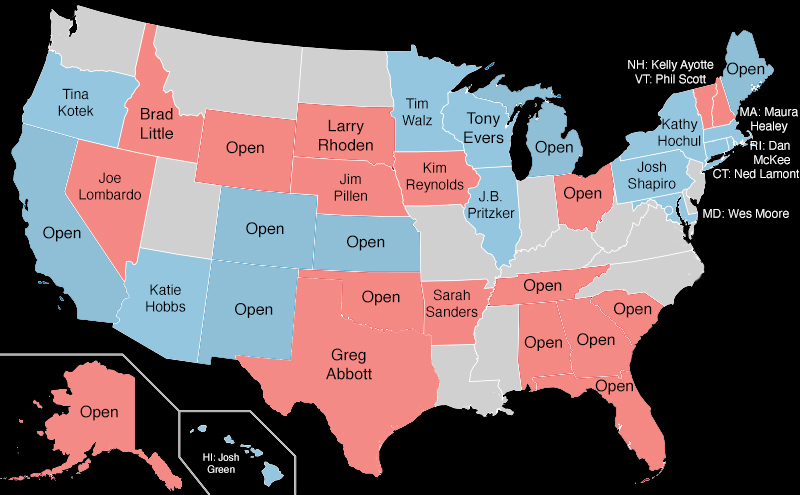

Virginia and New Jersey will elect governors in 2025. Gov. Glenn Youngkin (R-VA) is term-limited after one term and the Virginia governorship is always a battleground. New Jersey, not so much anymore. Rep. Josh Gottheimer (D-NJ) has already announced a run for it.
However, 36 states will elect a governor in 2026. Here is the breakdown by eligibility status in 2026:
Here is the 2026 gubernatorial map.

On the map, we are assuming Gov. Kristi Noem (R-SD) takes the job at Homeland Security, which would make Lt. Gov. Larry Rhoden (R-SD) governor and eligible to run. We can't imagine why she would stay in South Dakota, since she's been trying to get out of South Dakota ever since she was elected to the top job. Besides, now that her favorite dog is dead, she has no reason to stay. Most likely, all the eligible governors will run again, unless Donald Trump taps them for a job in his administration. A few will get serious challengers, but many will not. Swing-state governors will certainly get challengers. These include Republicans Joe Lombardo (NV), Phil Scott (VT), and Kelly Ayotte (NH), as well as Democrats Katie Hobbs (AZ), Tony Evers (WI) and Josh Shapiro (PA).
The open seat with the biggest partisan battle will be Georgia. Democratic representative Lucy McBath might run.
Some of the biggest battles will be the primaries in deep-red or deep-blue open seats. For Democrats, that will be California, New Mexico, Colorado, and Michigan. For Republicans, the big prizes will be Ohio and Florida, but there could be primary battles in all the open red states.
In 2022, four states changed partisan control of the governor's mansion. Republicans picked up Nevada and Democrats picked up Arizona, Maryland and Massachusetts. Arizona and Nevada will be battlegrounds again, but with a sitting governor, it is harder to flip a state. (V)